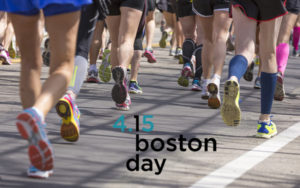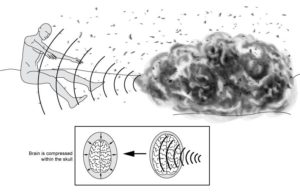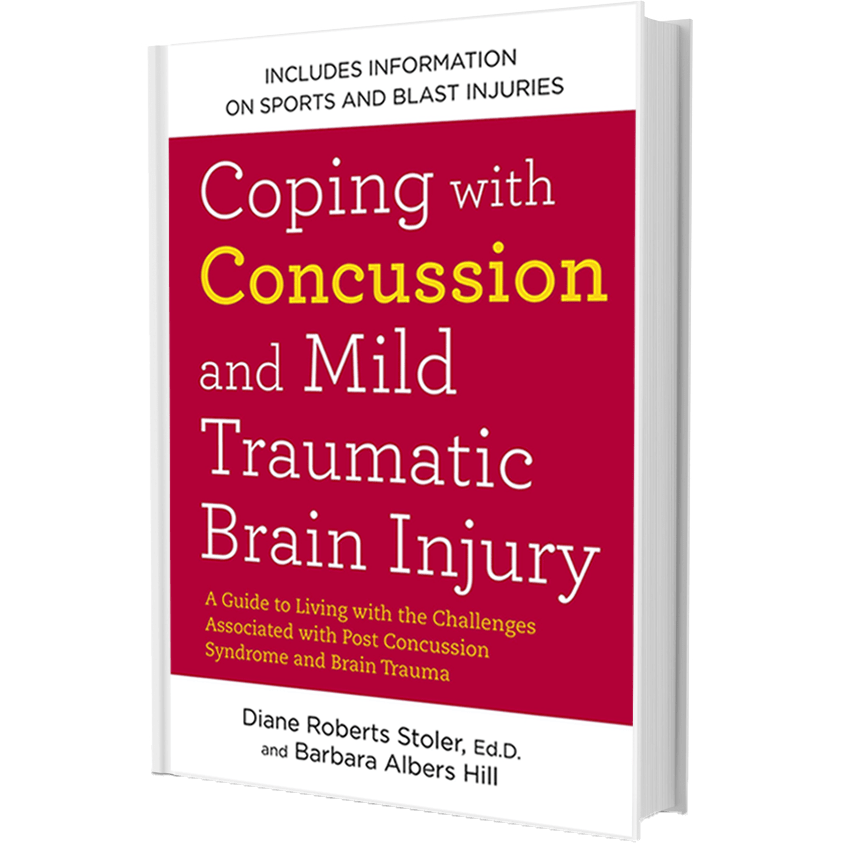Blast Injury: Coping with the Unexpected!
 No one attending the Boston Marathon on Patriot’s Day, April 15, 2013 expected to be victims in a terrorist attack that killed three spectators, and physically wounded more than 260 people. Many more are still suffering from living through that trauma, which is called PT Post-Traumatic Stress Disorder (PSTD). Over 20,000 people within one-quarter mile of the blast experienced the effects of a blast injury, resulting in Post-Concussion Syndrome (PCS). Beginning this year, Boston will celebrate the strength and resiliency of the city with One Boston Day.
No one attending the Boston Marathon on Patriot’s Day, April 15, 2013 expected to be victims in a terrorist attack that killed three spectators, and physically wounded more than 260 people. Many more are still suffering from living through that trauma, which is called PT Post-Traumatic Stress Disorder (PSTD). Over 20,000 people within one-quarter mile of the blast experienced the effects of a blast injury, resulting in Post-Concussion Syndrome (PCS). Beginning this year, Boston will celebrate the strength and resiliency of the city with One Boston Day.
Blast Injury Explained
 If you are in the military, you are aware of bomb explosions or improvised explosive devices (IEDs) that produce a sound wave called a supersonic wave. The movement, amplitude, and duration of the sound wave result in sufficient pressure within the brain to cause actual tissue damage along with dysregulation of connectivity and brain waves. An individual does not have to be physically moving or in contact with the blast for this injury to be enormous. Of these 20,000 people, over 90% will be misdiagnosed as having PTSD, because many of the symptoms of PCS are similar to those of PTSD. Everyone present at the Marathon, or who watched the event on television was emotionally impacted by the horrific scenes from the explosion, and seeing people bleeding and wounded before their eyes.
If you are in the military, you are aware of bomb explosions or improvised explosive devices (IEDs) that produce a sound wave called a supersonic wave. The movement, amplitude, and duration of the sound wave result in sufficient pressure within the brain to cause actual tissue damage along with dysregulation of connectivity and brain waves. An individual does not have to be physically moving or in contact with the blast for this injury to be enormous. Of these 20,000 people, over 90% will be misdiagnosed as having PTSD, because many of the symptoms of PCS are similar to those of PTSD. Everyone present at the Marathon, or who watched the event on television was emotionally impacted by the horrific scenes from the explosion, and seeing people bleeding and wounded before their eyes.
Resiliency
In our everyday life there are various hills, valleys and unexpected events, like a road detour when you’re late for work. In this blog, I’m not talking about this level of the unexpected. I’m talking about taking the kids into the city for a fun holiday event, and learning what it’s like to experience the chaos of an unexpected, life-changing event. Maybe I ought to have titled this blog, “Coping with being Blindsided in Life. I am talking about the major events that occur and do change our lives, such as a heart attack, stroke, concussion, cancer, tornado, hurricane, major accident, living through 9/11, the sudden death of a loved one, or a terrorist attack resulting in a blast injury. The key, I think, is resiliency. Resilience is the ability to recover from adverse change.
Picture a container of Silly Putty. Remember how much fun it was to play with as a kid? You could stretch it out and break it, roll it into a ball and bounce it, then stretch it again. Silly Putty bounces and stretches because of its resilience. This same type of resilience helps us cope with adversity.
We all have learned and have various coping habits that protect us during our regular events of life, some of these habits and methods of coping are both helpful and healthful. Yet many people acquire specific tools for coping, but have not learned to adjust and adapt effectively. Yet when you have a method for surviving and coping that has worked for you, it is far too often that, that method impedes your ability to tap into your own resiliency. One of my patients, Jim Lahar described it best, he said, “The Armor that protects you, is the Cage you Live in.” Living in a cage can and often does prevent your natural ability for resiliency. Hundreds of thousands of people have been affected this year from violent storms and floods that have destroyed their homes, precious memories, and resulted in job loss. Others have been victims of terrorist attacks, date rape, and domestic violence. Everyday someone is being “Blindsided with a life event.” In addition, it is often difficult to navigate the unexpected changes in health care laws, and retirement plans.
Dr. Diane’s Story
As many of you know from my about Dr. Diane page (Dr. Diane’s Story) my life changed in 1990 in a matter of minutes when I had a cerebral bleed that caused me to pass out while driving, that resulted in a 60 mile-an hour head-on auto accident. Five months later I had brain surgery, and four years later in 1994, I was told I was permanently brain damaged and that I would not walk, talk or think the same way ever again. They said I had no hope of recovery. At the time of my accident, my practice had the first integrative team of brain and health experts in the Commonwealth of Massachusetts. I had three offices and a team that included a psychiatrist, neurologist, psychiatric nurses, psychiatric social workers, a psychologist, neuropsychologist, acupuncturist, physical therapist, speech and language pathologist, and polarity, homeopathic, and massage practitioners. This team, along with meeting Dr. Igor Burdenko and his water therapy method along with discovering neurofeedback changed my life and within three years (1997), I was able to return to being a neuropsychologist and had published Coping with Mild Traumatic Brain Injury with my co-author Barbara Albers Hill. In 2005, I was diagnosed with Lyme Disease. I was unable to be treated with antibiotics since I have a severe allergic reaction to them. Thus, with the help of our current nutrition educator, Martha Lindsay, along with neurofeedback, all my acute and chronic symptoms of Lyme are under control. In 2008, the unexpected happened again, when driving home from a physical therapy appointment a snow plow was unable to stop and smashed into my car causing me to have another concussion. Once again my life was turned upside down. I picked up a copy of my book Coping with Mild Traumatic Brain Injury and said to my staff: “I’ll be back!” Five months later using the methods in my book, which included neurofeedback and Dr. Burdenko’s water therapy, I was back at work again. During this period in 2008, I had an MRI of my brain to determine the extent of my concussion from the car accident. One of the unexpected events was the radiologist reported that there was a tumor in my frontal lobe that was not seen in a previous MRI from 1990. I was advised to see a neurosurgeon, and I did. I was diagnosed with a Meningioma, which is a benign tumor. The brain surgeon suggested we observe it and see what happens. Meanwhile, in 2010, while sitting in a zero gravity chair in my backyard, the hinge snapped and I was propelled backward in the chair and knocked unconscious, resulting in still another concussion. Having had the other brain injuries, it took several months for my recovery, using all the methods including my brain diet. In 2011, while snorkeling in Costa Rica, I was stung by a jellyfish. As a previous scuba diver, I knew what to do for the sting and didn’t think too much about it. However, once again the unexpected occurred, the venom of the jellyfish activated my Lyme Disease and when I returned home from the trip, I had enlarged salivary glands, swollen lymph nodes in my neck, a swollen knee cap and a swollen ankle. It took doctors weeks to figure out what was the cause and to recommend a treatment of antibiotics, which as mentioned above, I have severe allergic reaction. Once again, Martha Lindsay was able to help me to recover from this unexpected event. By 2012, I thought my life was on an even keel, and then I found out that my office manager of 30 years, who was the god-parent to my children, had passed out only to discover she had inoperable brain cancer. She is still alive and well, yet the loss of someone who was an integral part of my daily life for over thirty years was beyond unexpected. During this time period, I had a repeat MRI of my brain and found the tumor was growing and brain surgery was advised. I was keenly aware of the effect of general anesthetic on people with mild to moderate cognitive impairment, but even if you’ve never had a brain injury, general anesthesia can affect your cognitive ability for a limited period (usually a week to a month). I have been able to help many people who have never had a brain injury recover, and regain their short term memory and recall recent events after general anesthesia. Hearing the advice about brain surgery that would include anesthesia, I sought a second, third and fourth opinion at Mass General Hospital (MGH), Beth Israel Hospital, Brigham & Women’s Hospital and Boston Medical Center. After hours of appointments and discussions, I chose a neurosurgeon that understood my history and respected my view point. Yet, the consensus of all four prominent neurosurgeons was that if I have seizures or severe headache, I would have to have brain surgery. Since then I use many complementary and alternative methods mentioned in my book along with suggestions from Martha Lindsay to help with any symptoms and reduce the chance of this happening. During this period, I did inform all my patients, staff, professional colleagues, friends and relatives and took appropriate efforts to ensure that my patients would be provided with backup and referral coverage, if needed. I also designated a health care proxy and power of attorney. I did not update my will, because I did not think my life was in danger.
Cancer
Between 2012 and 2014, we watched to see how my brain tumor was doing. Once again I was blind-sided with the unexpected, a severe pain in my right armpit. My first thought was a pinched nerve, my second thought was that it might be a gallbladder attack. My mother had one seven years prior and she had similar symptoms. Within days I went to my gastroenterologist, who ordered an MRI of my abdominal area. She called me after reading the radiology report. She said you need an immediate biopsy, they believe you have liver cancer. Hearing her words, I was in shock, then disbelief. I questioned the results and said I felt it was a group of capillaries called hemangioma, which I knew I had in my liver. Dealing with my brain tumor, I wanted to enjoy the summer months, thus I put off seeing a liver specialist at Beth Israel Hospital until November of 2014. He agreed that it might be a hemangioma and we would wait until November 2015 to redo the MRI. During the year that passed, I had no symptoms of the brain tumor or the tumor in my liver, which led me to believe that everything was fine.  I even felt well enough to mark off one of my items on my bucket list…a trip to India. Then in November 2015, I went to Beth Israel to have my repeat MRI of my liver, only to discover that my liver specialist felt I truly needed a biopsy of the tumor which had grown. Once again I was reluctant, because I was asymptomatic. Yet, I respected this physician very much and agreed to the biopsy on December 22, 2015. Once again I was coping with the unexpected, no different than the runners or the spectators at the Boston Marathon. The results of the biopsy changed my life forever as the blast injury changed the lives of over 20,000 people forever. I was diagnosed with lymphoma, yet my tumor was on my liver and not in my lymphatic system. As with my brain tumor diagnosis, I immediately felt it was important to inform all my patients, staff, professional colleagues, friends and relatives and took appropriate efforts to ensure that my patients would be provided with backup and referral coverage if needed. All of my current and previous patients were extremely grateful that I was concerned about their welfare during this time. Also, I reviewed my health care proxy and power of attorney again. This time I did update my will to take care of all my children and honorary children. The liver cancer presentation was one of the most unusual ones they had ever seen and thus they recommended another biopsy. Hearing this, I decided to get a second opinion at Dana Farber Cancer Institute. I phoned my neurosurgeon at Brigham & Women’s Hospital, which is affiliated with Dana Farber. They referred me to the chief of oncology who specializes in lymphoma. Seeing my original pathology report, he said that in his career, he never seen a presentation like mine and agreed that I needed a second biopsy, which I had on February 19, 2016. A week later, I received a phone call with my diagnosis. Upon hearing it, I knew no one would believe my diagnosis and would only presume that I must of have misunderstood the oncologist. I had asked him if my cancer is aggressive, was it Hodgkin or non-Hodgkin lymphoma or was it primary hepatic lymphoma. Hearing his response, I decided to write to him and ask if he could write back. Reading his reply, I decided to cut and paste it to all my family and friends, and then weeks later I posted it on my Facebook page. Here is part of what I posted.
I even felt well enough to mark off one of my items on my bucket list…a trip to India. Then in November 2015, I went to Beth Israel to have my repeat MRI of my liver, only to discover that my liver specialist felt I truly needed a biopsy of the tumor which had grown. Once again I was reluctant, because I was asymptomatic. Yet, I respected this physician very much and agreed to the biopsy on December 22, 2015. Once again I was coping with the unexpected, no different than the runners or the spectators at the Boston Marathon. The results of the biopsy changed my life forever as the blast injury changed the lives of over 20,000 people forever. I was diagnosed with lymphoma, yet my tumor was on my liver and not in my lymphatic system. As with my brain tumor diagnosis, I immediately felt it was important to inform all my patients, staff, professional colleagues, friends and relatives and took appropriate efforts to ensure that my patients would be provided with backup and referral coverage if needed. All of my current and previous patients were extremely grateful that I was concerned about their welfare during this time. Also, I reviewed my health care proxy and power of attorney again. This time I did update my will to take care of all my children and honorary children. The liver cancer presentation was one of the most unusual ones they had ever seen and thus they recommended another biopsy. Hearing this, I decided to get a second opinion at Dana Farber Cancer Institute. I phoned my neurosurgeon at Brigham & Women’s Hospital, which is affiliated with Dana Farber. They referred me to the chief of oncology who specializes in lymphoma. Seeing my original pathology report, he said that in his career, he never seen a presentation like mine and agreed that I needed a second biopsy, which I had on February 19, 2016. A week later, I received a phone call with my diagnosis. Upon hearing it, I knew no one would believe my diagnosis and would only presume that I must of have misunderstood the oncologist. I had asked him if my cancer is aggressive, was it Hodgkin or non-Hodgkin lymphoma or was it primary hepatic lymphoma. Hearing his response, I decided to write to him and ask if he could write back. Reading his reply, I decided to cut and paste it to all my family and friends, and then weeks later I posted it on my Facebook page. Here is part of what I posted.
Life Unexpected.
“This lymphoma looks aggressive under the microscope, but has acted slow growing. It is similar, but not the same as Hodgkin, treated a little differently. I guess you could say that this is a primary hepatic lymphoma because it is primarily in the liver, but that is not a specific entity.” On my desk there is a small plaque that read: I tried to be normal once. It was the worse two minutes of my life. I guess even in cancer, I’m not normal. Because of my prior brain injuries I have chosen NOT to do chemo. Instead, I’m planning to do neurofeedback (pEMF) protocol for cancer, hypnosis (I’m published in the field of hypnosis for cancer), cancer diet, whole food supplements, aroma therapy, and Reiki. Also, I know that your support, positive energy and prayers can and do make a difference. Will do this for 2 months and will have a PET Scan on April 26th to see how this is working out. As you can gather, the 2 months have passed and on April 26th we will see how well my method of treatment is working. For the past 3 weeks, I’ve had the flu, which I haven’t had in 26 years. I was out of work for 2 weeks.
Blast Injury Help
Again, I am reminded of Resiliency. The city of Boston has designated the anniversary of that awful day in 2013 to One Boston Day, celebrating the strength and resiliency of the city. How we cope with the unexpected is what counts, be it the aftermath of a blast injury, diagnosis of cancer, stroke, flood, or a long list of unexpected events. It is inspiring to see the resiliency of Marathon blast victims proudly walking and running with their prosthetics. With the methods in my recent book, I co-authored with Barbara Albers Hill, Coping with Concussion and Mild Traumatic Brain Injury, the 20,000 individuals affected by the blast injury can be helped. With the information in this book and what I’ve learned, once again I will be able to apply this to my own unexpected life event. You can regain your life. There is a Way!


